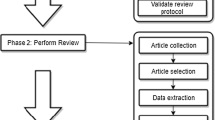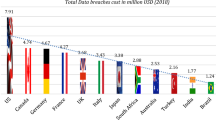Abstract
Requirements engineering plays a crucial role in the development process of an information system as it aims at providing a complete and accurate requirement specification. In the life cycle of a Data Repository (\({\mathcal {D}}{\mathcal {R}}\)) such as a database or a data warehouse, the requirements are mainly used to define the conceptual model once they have been identified from the informal specification. In this paper, we study the interest of requirements in the other phases of the \({\mathcal {D}}{\mathcal {R}}\) life cycle. As the data integration problem, handled in the Extract, Transform, Load (ETL) phase, comes from the heterogeneity of requirements, we introduce a requirement integration framework based on ontologies and a generic model to unify the used vocabularies and requirement languages. Then we propose an approach to check the consistency of the requirements, w.r.t. the integrity constraints defined on the logical schema using the formal B method. We also show that requirements help define appropriate access structures such as indexes and materialized views to optimize SQL queries of a \({\mathcal {D}}{\mathcal {R}}\). Our approach is based on transformation rules that identify important queries that will be executed on a \({\mathcal {D}}{\mathcal {R}}\) directly from the requirements. The experiments conducted on the Star Schema Benchmark (SSB) confirm the interest of this approach for the selection of different optimization structures. Finally, we present the OntoReqTool that implements the previous functionality on top of the OntoDB/OntoQL platform.












Similar content being viewed by others
Notes
Currently, we have not implemented modules to convert requirements defined with well-known CASE tools into instances of our metamodels. This is part of our future work.
x’y defines the access to the y attribute of the x object.
The selected materialized views are detailed in Annex.
References
Golfarelli, M., Rizzi, S.: Data warehouse design: modern principles and methodologies. McGraw-Hill, Osborne (2009)
Badia, A., Lemire, D.: A call to arms: revisiting database design. SIGMOD Rec. 40(3), 61–69 (2011)
Jovanovic, P., Romero, O., Simitsis, A., Abelló, A., Mayorova, D.: A requirement-driven approach to the design and evolution of data warehouses. Inf. Syst. 44, 94–119 (2014)
Ait-Ameur, Y., Bellatreche, L., Jean, S., Sardet, E., Baron, M.: Ontologies in engineering: the OntoDB/OntoQL platform. In: Soft Computing, pp. 1–21. Springer, Berlin, Heidelberg (2015)
Jean, S., Ait-Sadoune, I., Bellatreche, L., Boukhari, I.: On using requirements throughout the life cycle of data repository. In: Proceedings of the 25th International Conference on Database and Expert Systems Applications (DEXA 2014), pp. 409–416 (2014)
Guo, Y., Pan, Z., Heflin, J.: LUBM: a benchmark for OWL knowledge base systems. J. Web Semant. 3(2–3), 158–182 (2005)
Wieringa, R., Dubois, E., Huyts, H.S.: Integrating semi-formal and formal requirements. In: Proceedings of the 9th International Conference on Advanced Information Systems Engineering, (CAiSE’97), pp. 19–32 (1997)
du Bois, P.: The ALBERT II Language. Ph.D. thesis, Facultés Universitaires Notre Dame de la Paix, Namur (1995)
Laleau, R., Semmak, F., Matoussi, A., Petit, D., Hammad, A., Tatiboue, B.: A first attempt to combine SysML requirements diagrams and B. Innov. Syst. Softw. Eng. 6, 47–54 (2010)
Dardenne, A., Lamsweerde, A., Fickas, S.: Goal-directed requirements acquisition. Sci. Comput. Program. 20, 3–50 (1993)
López, O., Laguna, M.A., G.Peñalvo, F.J.: A metamodel for requirements reuse. In: VII Jornadas de Ingeniería del Software y Bases de Datos (JISBD), pp. 427–428 (2002)
Navarro, E., Mocholi, J., Letelier, P., Ramos, I.: A metamodeling approach for requirements specification. J. Comput. Inf. Syst. 46, 67–77 (2006)
ITU-T12: User Requirements Notation (URN)-Language definition (2012)
Vicente-Chicote, C., Moros, B., Toval, A.: REMM-studio: an integrated modeldriven environment for requirements specification, validation and formatting. J. Object Technol. 6(9), 437–454 (2007)
Brottier, E., Baudry, B., Traon, Y., Touzet, D., Nicolas, B.: Producing a global requirement model from multiple requirement specifications. In: Proceedings of the 11th IEEE International Enterprise Distributed Object Computing Conference, (EDOC’07), p. 390 (2007)
Perrouin, G., Brottier, E., Baudry, B., Traon, Y.L.: Composing models for detecting inconsistencies: a requirements engineering perspective. In: Requirements Engineering: Foundation for Software Quality, 15th International Working Conference, (REFSQ 2009), pp. 89–103 (2009)
Nguyen, T.H., Grundy, J., Almorsy, M.: Integrating goal-oriented and use case-based requirements engineering: the missing link. In: ACM/IEEE 18th International Conference on Model Driven Engineering Languages and Systems (MODELS), pp. 328–337 (2015)
Mirbel, I., Villata, S.: Enhancing goal-based requirements consistency: an argumentation-based approach. In: 13th International Workshop in Computational Logic in Multi-Agent Systems (CLIMA), pp. 110–127 (2012)
Heitmeyer, C.L., Jeffords, R.D., Labaw, B.: Automated consistency checking of requirements specifications. ACM Trans. Softw. Eng. Methodol. 5, 231–261 (1996)
Giorgini, P., Mylopoulos, J., Nicchiarelli, E., Sebastiani, R.: Formal reasoning techniques for goal models. J. Data Semant. 1, 1–20 (2004)
van Lamsweerde, A., Letier, E., Darimont, R.: Managing conflicts in goal-driven requirements engineering. IEEE Trans. Softw. Eng. 24(11), 908–926 (1998)
Jean, S., Pierra, G., Ameur, Y.A.: Domain ontologies: a database-oriented analysis. In: Web Information Systems and Technologies, International Conferences, WEBIST 2005 and WEBIST 2006. Revised Selected Papers, pp. 238–254 (2007)
Bellatreche, L., Nguyen, D.X., Pierra, G., Dehainsala, H.: Contribution of ontology-based data modeling to automatic integration of electronic catalogues within engineering databases. Comput. Ind. J. 57(8–9), 711–724 (2006)
Boukhari, I., Bellatreche, L., Jean, S.: An ontological pivot model to interoperate heterogeneous user requirements. In: Proceedings of the 5th International Symposium on Leveraging Applications of Formal Methods, Verification and Validation (ISOLA 2012), pp. 344–358 (2012)
Khouri, S., Bellatreche, L., Jean, S., At-Ameur, Y.: Requirements driven data warehouse design: we can go further. In: Proceedings of the 7th International Symposium On Leveraging Applications of Formal Methods, Verification and Validation (ISOLA 2014), pp. 588–603 (2014)
Boukhari, I.: Intégration et exploitation de besoins en entreprise étendue fondées sur la sémantique. Ph.D. thesis, LIAS/ENSMA and University of Poitiers (2014)
ClearSy: Atelier b - version 4.1 (2013)
Abrial, J.R.: The B-book: Assigning Programs to Meanings. Cambridge University Press, New York (1996)
Ait-Sadoune, I., Ait-Ameur, Y.: Stepwise development of formal models for web services compositions: modelling and property verification. J. Trans. Large Scale Data Knowl. Cent. Syst. (TLDKS X) 8220(2013), 1–33 (2013)
Dijkstra, E.W.: A Discipline of Programming. Prentice Hall PTR, Upper Saddle River (1977)
Mammar, A., Laleau, R.: A formal approach based on UML and B for the specification and development of database applications. Autom. Softw. Eng. 13(4), 497–528 (2006)
Boukorca, A., Bellatreche, L., Senouci, S.A.B., Faget, Z.: SONIC: scalable multi-query optimization through integrated circuits. In: Proceedings of the 24th International Conference on Database and Expert Systems Applications (DEXA’13), pp. 278–292 (2013)
Boukhari, I., Bellatreche, L., Khouri, S.: Efficient, unified, and intelligent user requirement collection and analysis in global enterprises. In: Proceedings of International Conference on Information Integration and Web-based Applications and Services (IIWAS ’13), pp. 686–691 (2013)
Jiménez-Ruiz, E., Cuenca Grau, B., Sattler, U., Schneider, T., Berlanga Llavori, R.: Safe and economic re-use of ontologies: a logic-based methodology and tool support. In: Proceedings of the 5th European Semantic Web Conference (ESWC’08), pp. 185–199 (2008)
Author information
Authors and Affiliations
Corresponding author
Annex
Annex
The selected materialized views:

Rights and permissions
About this article
Cite this article
Boukhari, I., Jean, S., Ait-Sadoune, I. et al. The role of user requirements in data repository design. Int J Softw Tools Technol Transfer 20, 19–34 (2018). https://doi.org/10.1007/s10009-016-0443-0
Published:
Issue Date:
DOI: https://doi.org/10.1007/s10009-016-0443-0




